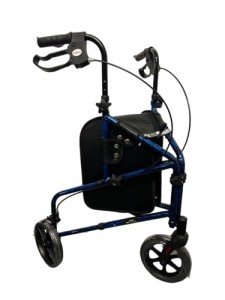
Understanding Mobility Aids: Enhancing Independence and Quality of Life
Mobility aids are vital tools that assist individuals with physical disabilities or conditions that impede their capability to move freely. These aids not only promote independence and improve quality of life but likewise offer safety and support for users in numerous environments. The landscape of mobility aids is broad, including a variety of devices tailored to fulfill individual requirements. This short article aims to explore the different types of mobility aids, their benefits, considerations for use, and frequently asked questions.
Kinds Of Mobility Aids
Mobility aids can be classified into numerous significant types, each designed to help in specific methods. Below is a table summing up the most common mobility aids:
| Type of Mobility Aid | Description | Suitable Use Case |
|---|---|---|
| Wheelchairs | A chair installed on wheels used by those unable to walk. | Long-lasting impairment or severe mobility concerns. |
| Walkers | A frame that supplies assistance for people while walking. | Post-surgery recovery or balance issues. |
| Walking canes | A stick used for balance and assistance while walking. | Moderate mobility problems or as a preventive procedure. |
| Rollators | A walker geared up with wheels and typically a seat. | People needing assistance over longer distances. |
| Crutches | Devices used to elevate and support the body weight of an individual with a leg injury. | Temporary injuries needing non-weight bearing. |
| Scooters | A motorized device for those who can sit but not stroll fars away. | Long getaways and fatigue-prone individuals. |
| Raise Chairs | Recliners that raise to help users in standing. | Elderly individuals or those with extreme pain. |
Benefits of Mobility Aids
Making use of mobility aids extends beyond mere transportation; they serve numerous important functions in boosting the wellness of users:
- Independence: Mobility aids empower users to carry out daily activities without relying greatly on caretakers or support from others.
- Safety: Many mobility aids are developed to lessen the danger of falls, providing users with stability when moving.
- Boosted Quality of Life: By improving mobility, individuals can engage in social activities, exercise, and keep community connections, favorably impacting their mental health.
- Access to Environments: Mobility aids can facilitate access to places that may otherwise be challenging to navigate, such as public transportation and public spaces.
- Support Recovery: They play an important function in rehabilitation following surgery or injury by promoting gradual mobility and aiding recovery.
Factors to consider for Choosing the Right Mobility Aid
Picking the proper mobility aid can considerably affect a person's quality of life. Here are a number of essential factors to consider to keep in mind:
- Level of Mobility Impairment: Assess the seriousness of mobility issues to figure out the most appropriate type of aid.
- User's Physical Condition: Consider elements like weight, strength, and total health.
- User's Lifestyle and Environment: Analyze where the mobility aid will be utilized frequently: indoors, outdoors, or both.
- Functional Needs: Evaluate if additional features such as storage, seating, or height modifications are necessary.
- Assessment with Professionals: Always seek recommendations from healthcare specialists for guidance tailored to specific scenarios.
Often Asked Questions (FAQs)
Q1: What is the difference between a Senior Walker and a Lightweight Folding Rollator with Seat - Easy Mobility?A1: A Indoor Walker is a simple frameused for assistance and balance, while a Rollator For Disabled has wheels, supplying much easier mobility and frequently features extra functions such as a seat and storage. Q2: Can mobility aids be covered by insurance?A2:
Many health insurance coverage strategies, consisting of Medicare, might cover my mobility scooters aids if they are deemed clinically required. It is suggested to seek advice from your insurance coverage provider for specific details. Q3: How To Use A Rollator do I understand when it's time to use a mobility aid?A3: If you've experienced frequent falls, persistent discomfort
while walking, or have problem finishing daily activities
, it may be time to consider a mobility aid. Consult a healthcare specialist for personalized suggestions. Q4: Are there mobility aids created for outdoor use?A4: Yes, lots of mobility aids are specifically created for outdoor environments, consisting of scooters, outdoor walkers, and all-terrain wheelchairs, geared up to deal with various terrains. Q5: Can I use a mobility aid after surgical treatment, like knee replacement?A5: Yes, mobility aids such as walkers and crutches are frequently advised post-surgery to aid recovery and keep safety as you regain
strength. Mobility aids play a vital function in supporting people with mobilitychallenges, facilitating self-reliance, and boosting total quality of life. With a varied series of options readily available, it's important for users to assess their unique needs and talk to professionals to select the most appropriate aid. As technology and design continue to develop, these aids will certainly end up being much more user-friendly and reliable, promoting a more inclusive world for everybody. By understanding the various types of mobility aids and their respective benefits, individuals can make educated choices that enhance their mobility and assist in a more active and fulfilling lifestyle.







